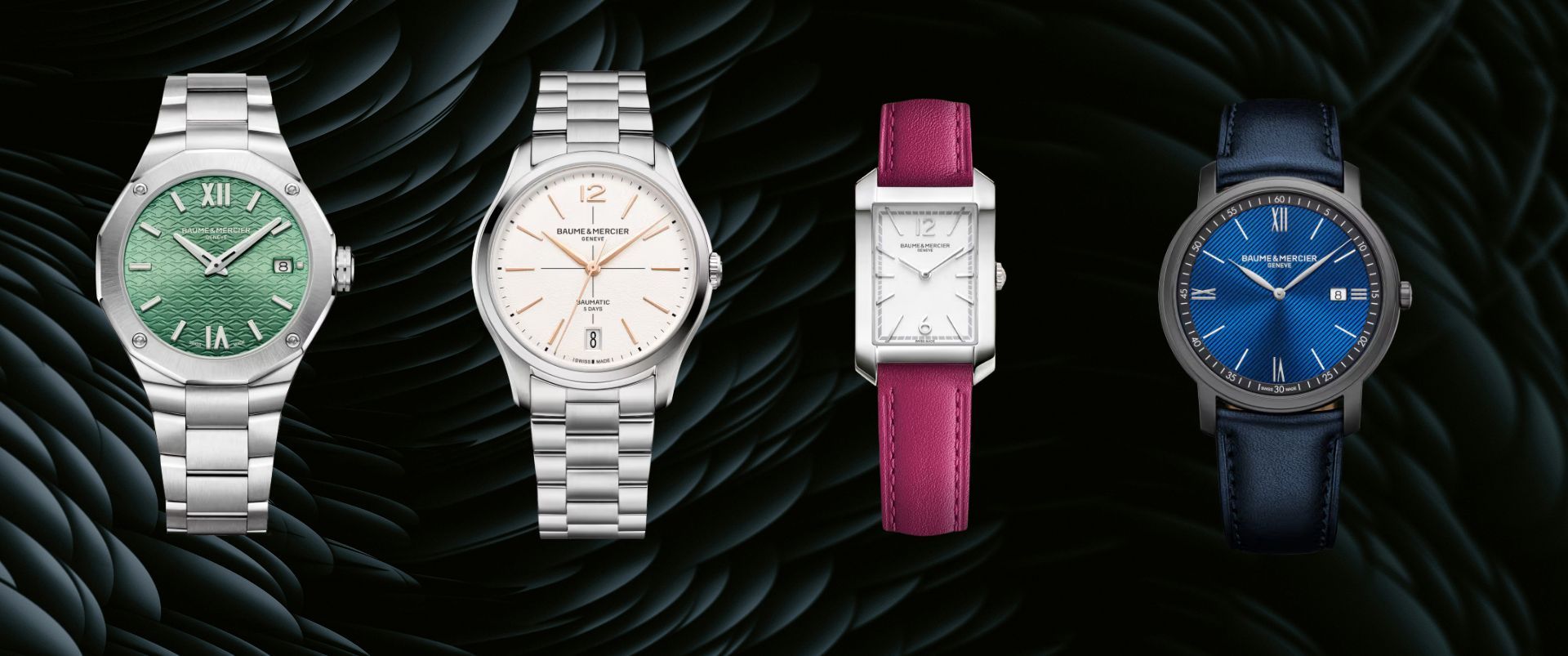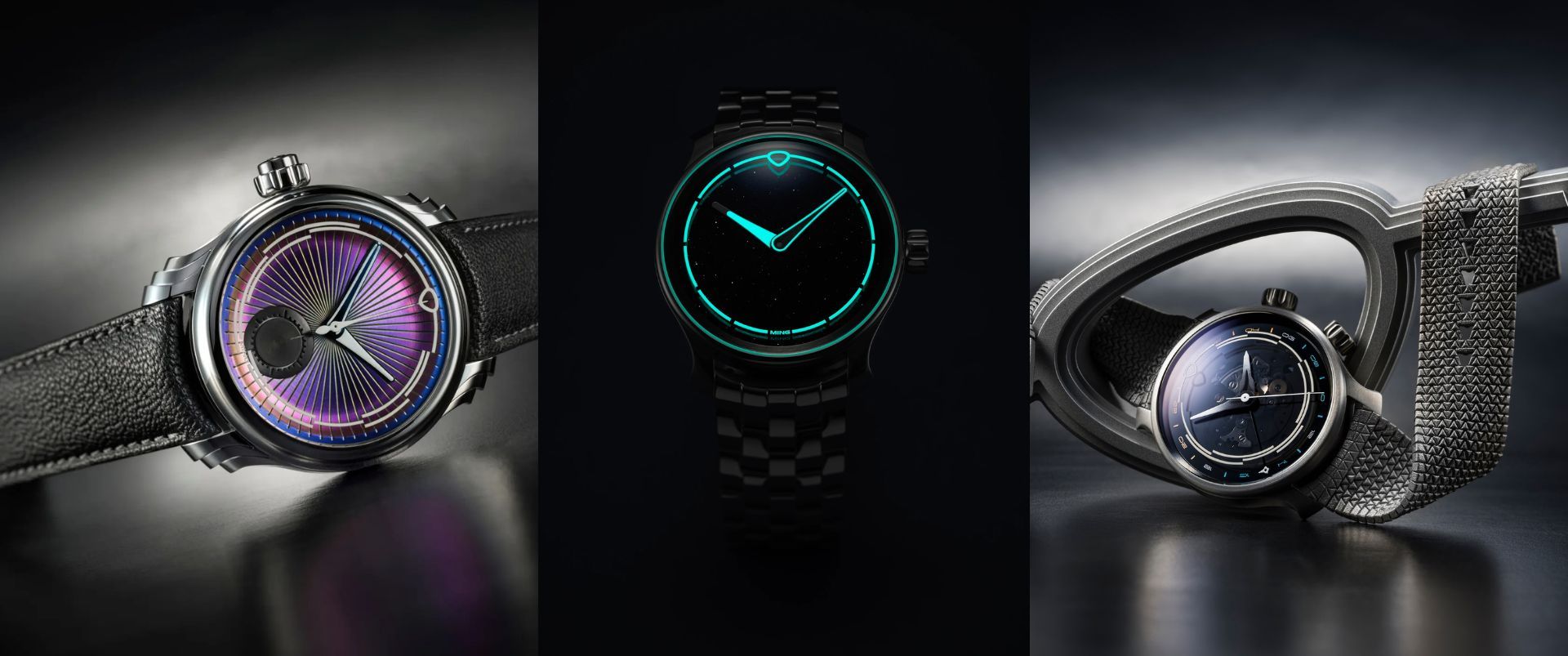Traditional Chinese Symbols Find Vivid Expression On Vacheron Constantin’s New Métiers d'Art Collection
Symbols of traditional Chinese culture come alive on the canvas of Vacheron Constantin’s Métiers d'Art watches in a glorious collection of four limited edition watches. The collection is created in collaboration with the Former Associate Research Librarian, Mr Song of the Palace Museum located in Beijing's Forbidden City.
To immerse itself in the distinctive decor of the 14th to early 20th century, the Maison took a particular interest in the decorative arts and notably in the “Seawater Cliff” a legendary motif omnipresent on courtly architectural elements, but also on furniture and porcelain, as well as on imperial clothing and particularly the so-called ‘dragon’ robes. These richly embroidered silk ceremonial garments conveyed distinctive symbolism according to their motifs. A legendary Chinese motif that first appeared in the 14th century, this depiction of wave-lashed cliffs belongs to the cultural tradition of Imperial China. Housed in a 38 mm-diameter case in 18K pink or white gold, powered by Calibre 2460 driving central hours and minutes hands, these dials provide a forceful, beautiful glimpse of Chinese cultural symbolism.
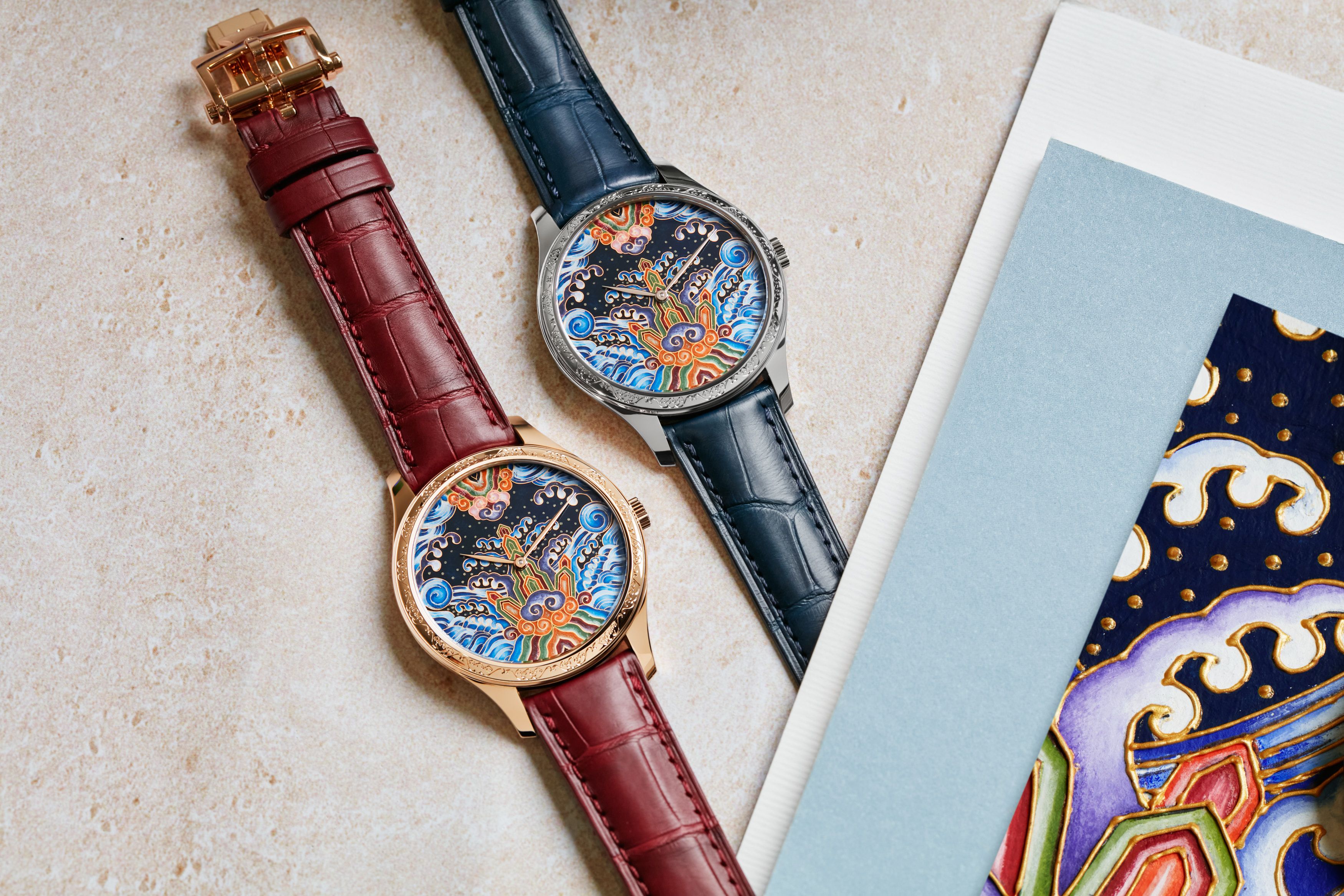
For this research work, the Maison benefited from the advice of Mr. Song who provided valuable insight this expert in Chinese history and symbolism, studies on the dials of the four Métiers d’Art limited editions focused on the "Seawater Cliff" motif. Extensively documented by Mr. Song, this depiction features a mountain towering above the tides with their ebb and flow lashing its cliffs. Embroidered on the lower hem and cuffs of the robe, this ornamentation was regarded as auspicious for those who wore it.

In Chinese, the words 'tide' and 'dynasty' are homonyms, while the word 'cliff' can also mean 'ginger buds' – of which one can recognise the outline on the edge of this escarpment overlooking the sea. In Chinese tradition, water and mountains are also strong territorial symbols. With this "Seawater Cliff" motif richly emblazoned on his ceremonial robes the emperor embodied stability. Like the unshakeable cliff above the waves, a symbol of peace and longevity, he was the guarantor of the country's fortune and prosperity. This motif became very popular and spread across all social classes in furniture, sculpture, decorative objects and architecture.
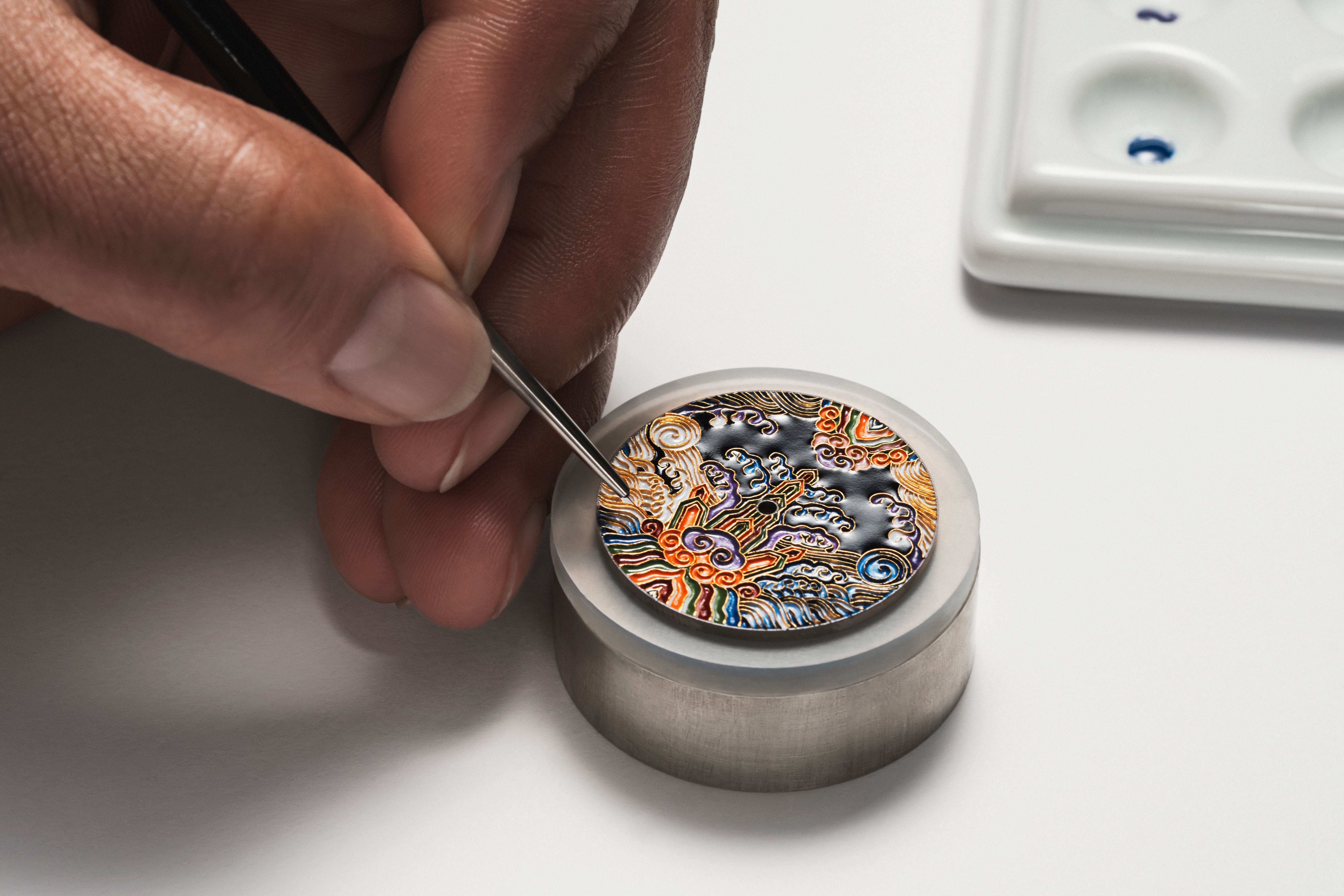
Beating at the heart of the 38 mm-diameter case in 18K pink and white gold is in-house Calibre 2460, chosen for its aesthetic appeal and compact dimensions (26.2 mm in diameter and 3.60 mm thick). The movement’s configuration driving central hands ensures seamless integration with the dial to give scope and depth to the passing hours and minutes. Endowed with a 40-hour power reserve, it meets all the criteria of the Hallmark of Geneva certifying both origin and horological expertise. The 22K gold rotor echoes the symbolism of the dial, since the oscillating weight is delicately engraved with a motif recalling the movement of waves and tides.
Against a star-studded night sky, the mountain peaks, bordered by vegetation in the shape of ginger buds, are caressed by tidal waves. With its colourful aesthetic and respect for traditional Chinese ornamentation, this depiction is a masterpiece of cloisonné enamelling, which was originated in China.
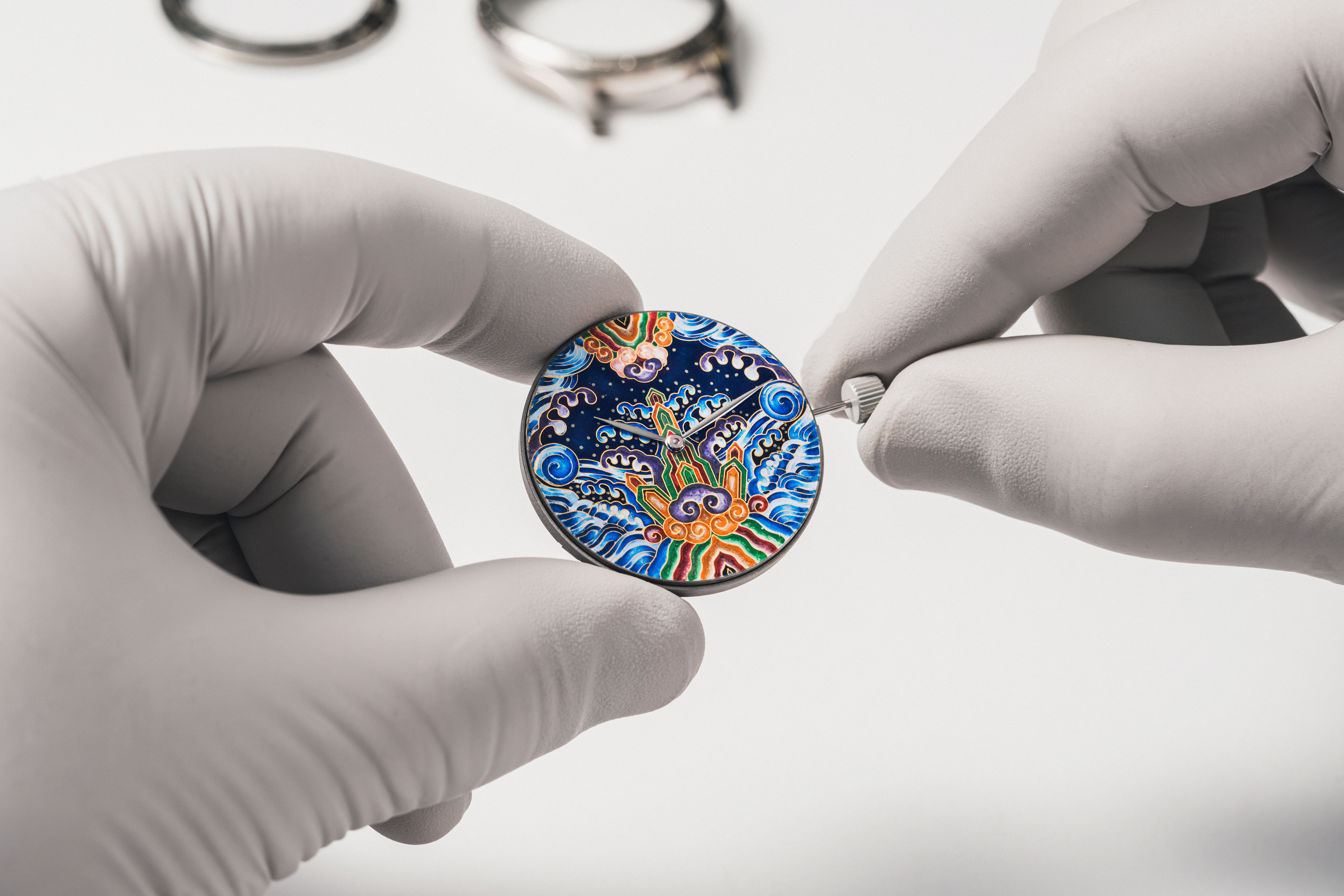
Laying the 220 gold wires used to delineate the enamelling fields forming the "Seawater Cliff" motif along requires more than 50 hours of work to shape the motif. This is followed by the enamelling itself in successive layers according to colour and intensity, with a kiln firing between each operation. It takes no less than 70 hours to achieve the rich tones that are so characteristic of this piece. A final polish then completes the work to highlight the gold cloisonné that gives substance to the motif. Finally, a translucent enamel coating instils a unique glow into this highly architectural composition, enhanced by the finesse of the lines and ancestral expertise.
To highlight this enamelling work, the bezel of the model is entirely hand-engraved with a bat motif. In Chinese, 'bat' and 'happiness' have similar pronunciations – which goes some way to explaining the status of this animal as a harbinger of good fortune.
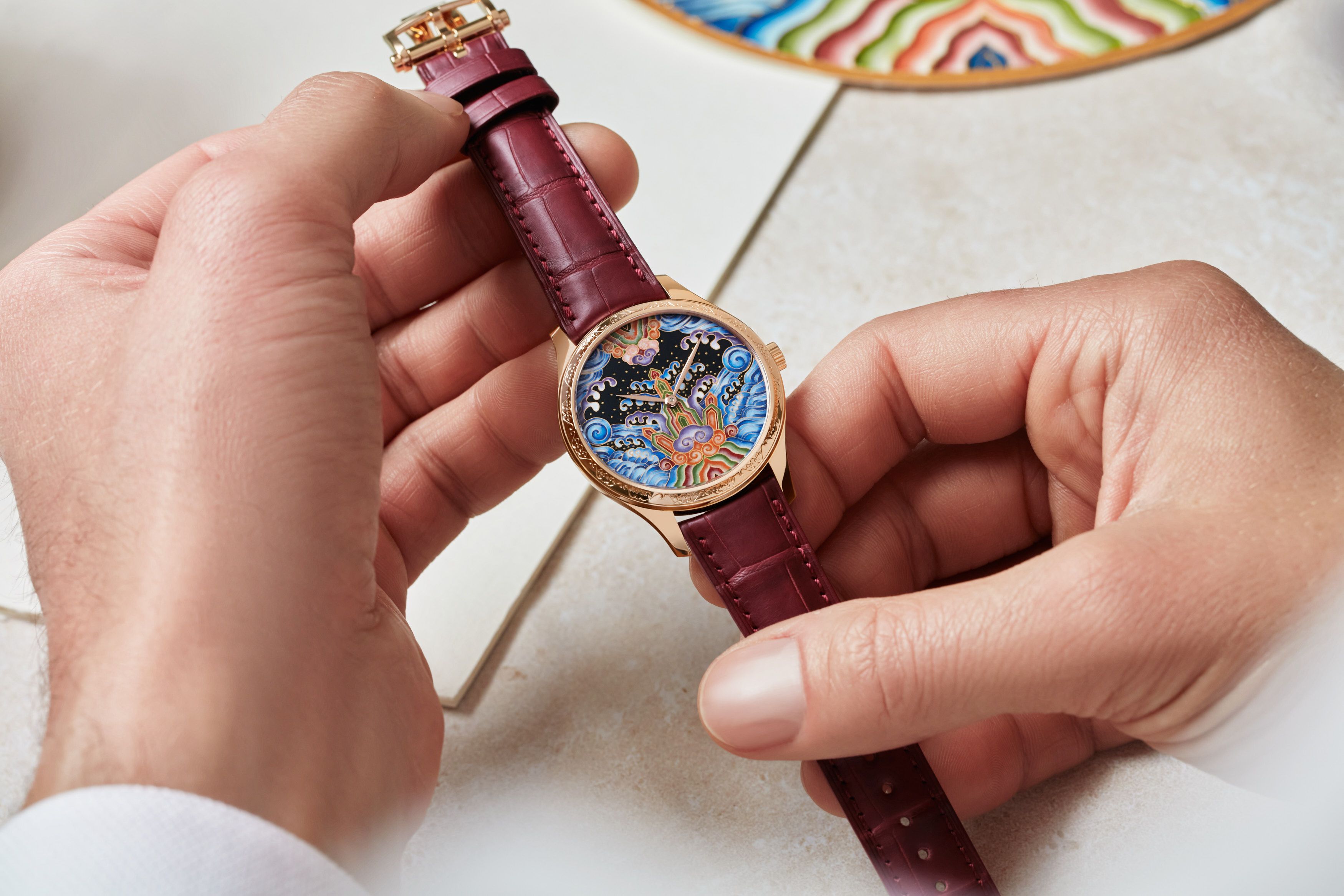
For this second "Seawater Cliff" motif, the aim was to achieve a depth effect on a monochrome base. Crafted in 18K white or pink gold depending on the model, the all-in-one-piece dial features hollowed waves, blue enamelled parts and raised diamond-set sections for the mountain area. The master artisan has used a blend of techniques to create this composition, endowing the motif with a subtle yet distinctive aesthetic.

The gold dial is divided into three parts. The first, which delineates the sea, is made of deep-blue Grand Feu enamel applied in successive kiln-fired layers. This is followed by patient engraving. The technique used for this depiction of waves is engraving on enamel to create volutes. These are then accentuated by the master artisan, who fills in the furrows with white enamel that is then also fired. This extremely thin layer creates a subtle shadow on a delicately textured background, creating the impression of a sea in motion.
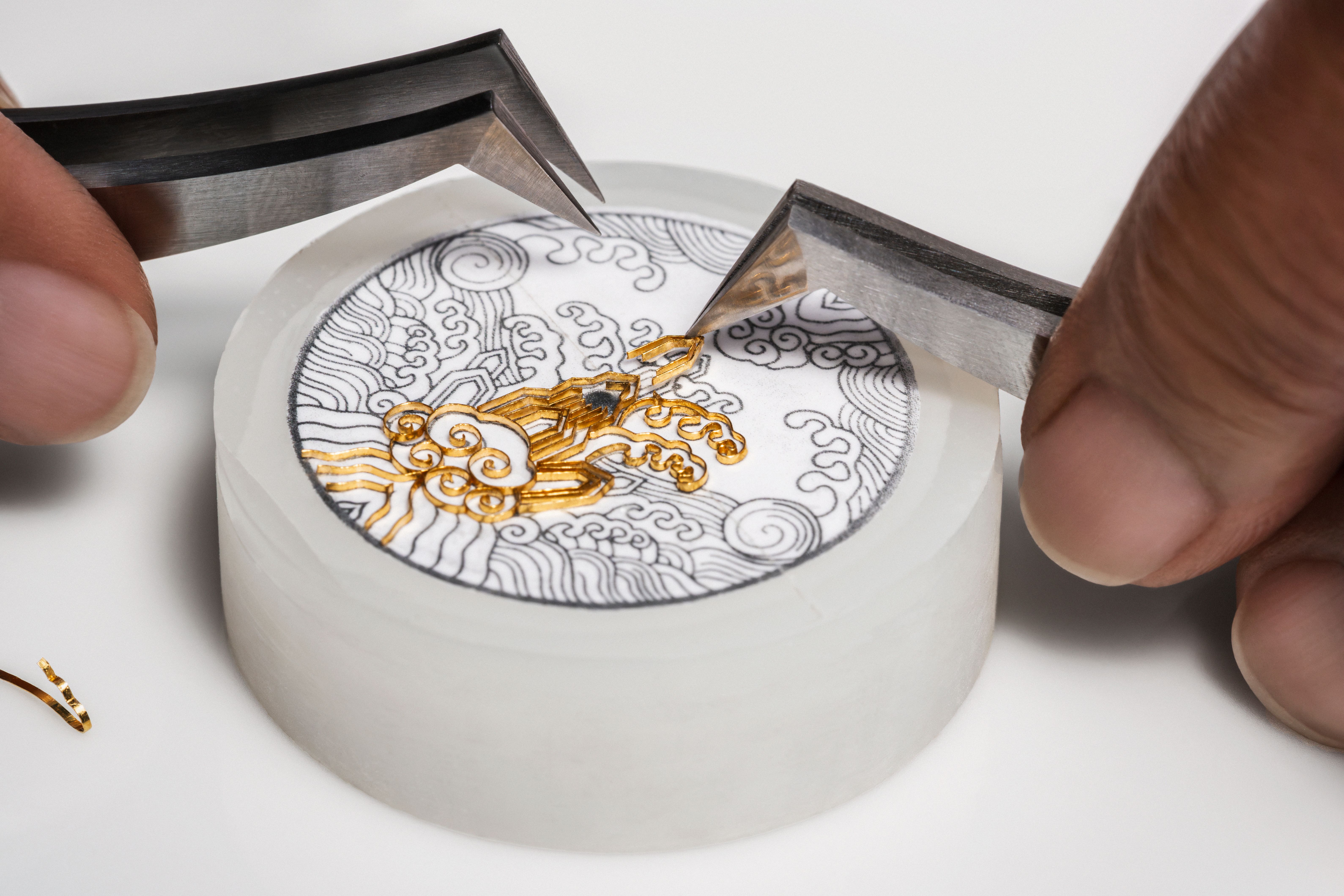
The second part, devoted to the sea tides running along the mountain range, is reserved for the setting. Each sea tide is delicately hand-set with brilliant-cut diamonds, evoking the moon slivers that inspired the name of this piece. Meanwhile, the third part of the dial serves to add relief, with a mountain range lashed by foaming waves. Meticulously engraved with tone-on-tone champlevé enamel inlays to accentuate the depth of the landscape, this portrayal of the mountains is also worked in drypoint to accentuate the perspective effect. The sparkling brilliant-cut diamonds adorning the sea tides exude an ashen moonlight gleam, echoed by the setting of the bezel entirely adorned with brilliant-cut diamonds.
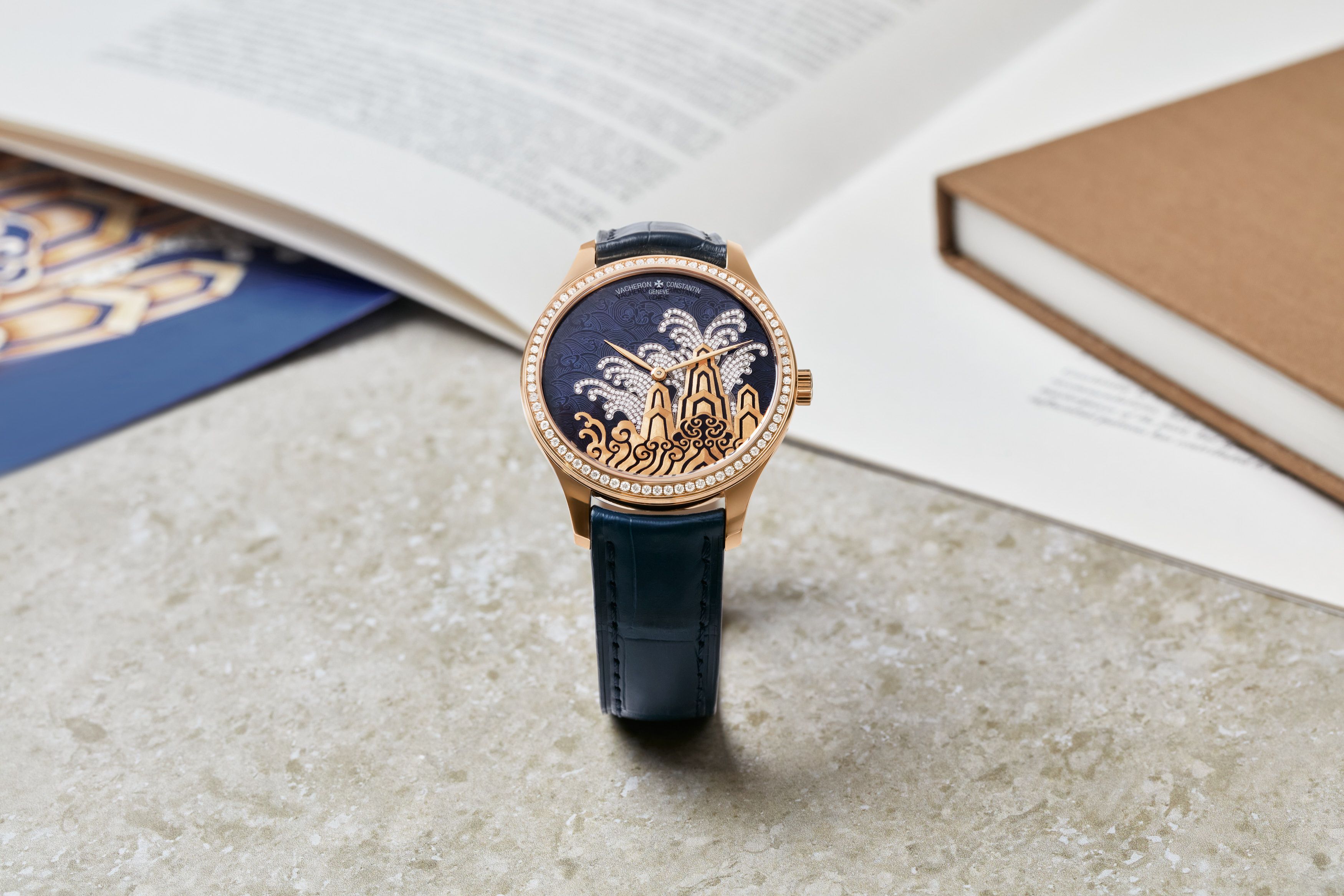
Commenting on the collection, Christian Selmoni, Style & Heritage Director says, “By reproducing these ancient motifs on a watch dial, the Maison’s teams and artisans are obliged to demonstrate creativity in order to preserve the spirit of the motifs, while at the same time shining a spotlight on these incredibly rich Imperial garments, symbols of a key period in Chinese history.”
No articles found

